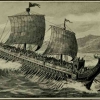How Do We Actually Teach HOTS?
Using HOTS in the classroom doesn't mean changing everything. It means adding more chances for students to think deeply. Here are some ways to make it happen:
1. Make clear goals: Teachers can use action words like 'compare', 'analyze', 'design', or 'defend' in their learning objectives. These push students to go beyond memorizing and start thinking.
2. Use real-life problems: Students can discuss social issues, solve community problems, or work on small research projects. These activities help them connect school to the real world.
3. Try different tests: Instead of giving only multiple-choice questions, teachers can ask students to explain their thinking, create posters, or do group presentations. These tasks give a better picture of how well students understand.
4. Support teachers: Many teachers want to use HOTS but feel unsure. Schools can help by giving training, sharing lesson examples, or letting teachers plan together. Support and teamwork are key to making HOTS successful.
The Challenge: Why It’s Not Always Easy?
Although HOTS is important, putting it into practice is not always simple. Many teachers face big challenges in trying to apply these ideas.
First, time is a major issue. Classes are often short, and teachers must cover a lot of material. It can be hard to find enough time to ask deeper questions or let students explore their ideas.
Second, many classrooms are large. With too many students, it’s difficult to give everyone the chance to share ideas or work on creative projects. Teachers may not be able to give enough feedback to help each student grow.
Third, resources are often limited. Some schools do not have enough books, materials, or technology to support HOTS learning. In rural or underfunded schools, this makes it even harder.
Lastly, some teachers have never been trained to teach higher-order thinking. They may be more used to traditional teaching methods like lectures and memorization. To change this, schools need to support teachers with training, time, and encouragement.
Final Thoughts: Preparing for the Real World
Education is more than just getting good grades or passing exams. It’s about helping students become people who can think clearly, solve problems, and make good choices. HOTS helps students prepare for real life. It gives them the tools to deal with change, think for themselves, and create new ideas. These skills are not just useful in school—they are useful in everyday life, at work, and in the community. Let’s give students more chances to think deeply, ask questions, and find their own solutions. When we focus on how students think—not just what they know—we prepare them not only for exams, but for the future.
Word Count: 989 words
Reference
Anderson, L. W., & Krathwohl, D. R. (2001). A Taxonomy for Learning, Teaching, and Assessing: A Revision of Bloom's Taxonomy of Educational Objectives. New York: Longman.
Brookhart, S. M. (2010). How to Assess Higher-Order Thinking Skills in Your Classroom. Alexandria, VA: ASCD.









